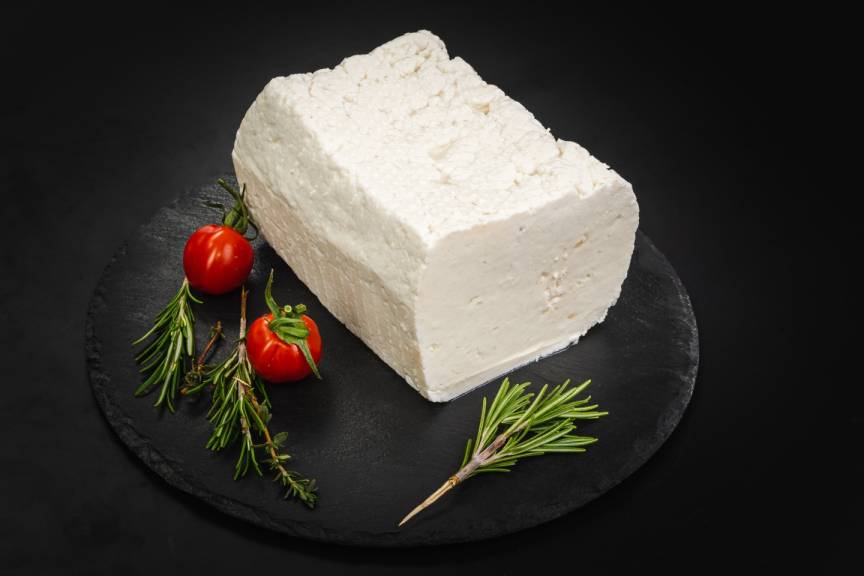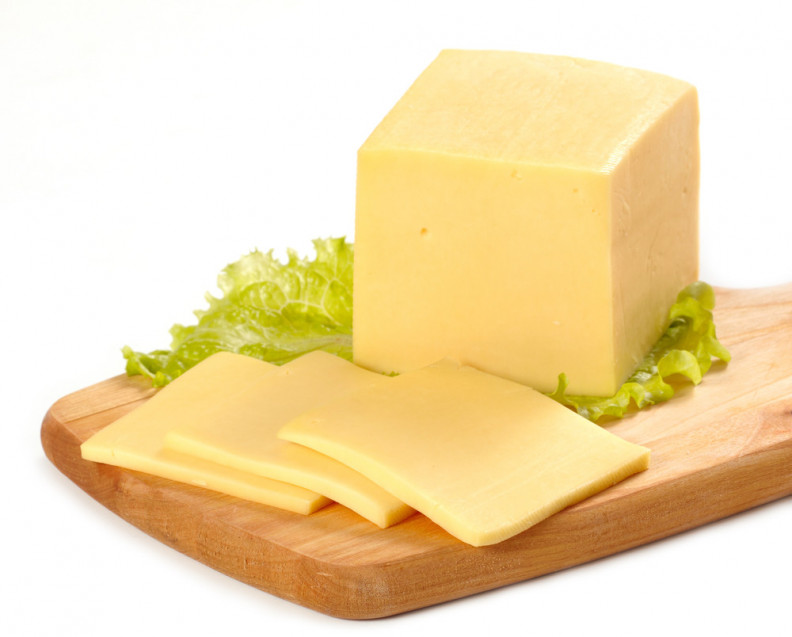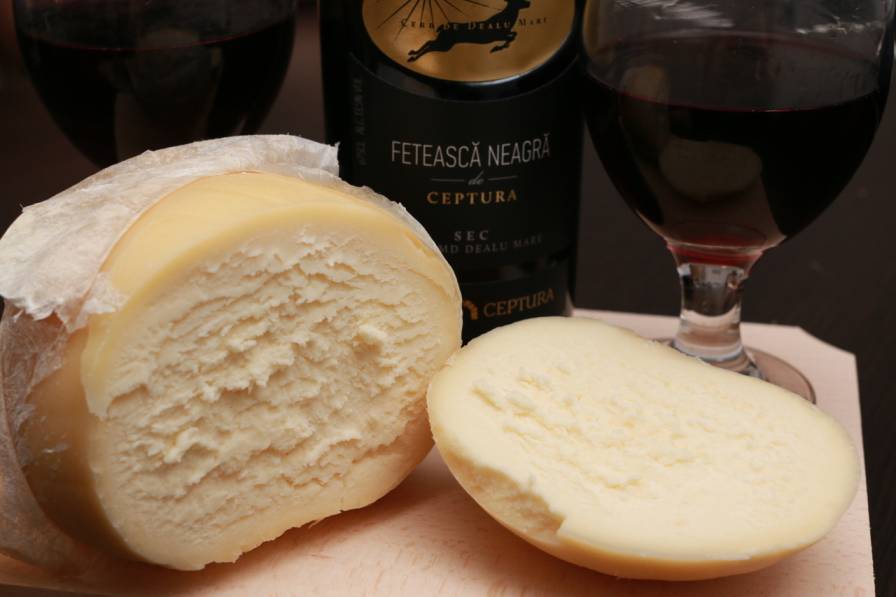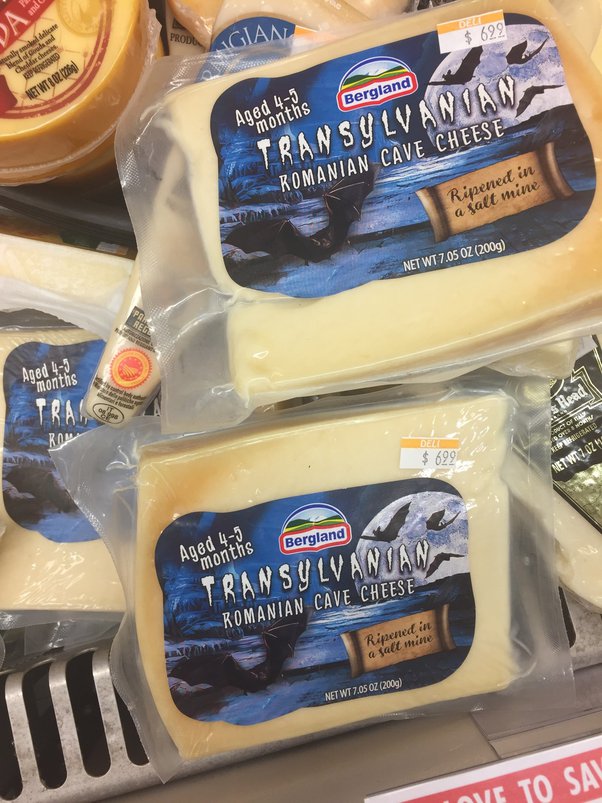8 Most Popular Cheeses Originated in Romania

Romania, a country nestled in the heart of Eastern Europe, is a treasure trove of culinary delights. Its rich history and diverse cultural influences have given rise to a wide array of delectable foods, among which its traditional cheeses hold a special place. These cheeses, crafted with time-honored methods and local ingredients, offer a unique window into Romania’s gastronomic heritage.
From the high peaks of the Carpathian mountains to the lush plains of Transylvania, each region brings forth its own distinctive cheese, reflecting the flavors of its landscape. Here, we invite you to embark on a flavorful journey through eight of the most popular cheeses that originated in Romania, each with its own story, texture, and taste profile.
The 8 Most Popular Romanian Cheeses (BEST)
| Cheese | Description | Tasting Profile |
|---|---|---|
| Telemea | A white, salty cheese often used in traditional Romanian dishes. It’s made from sheep’s, cow’s, or goat’s milk. | Salty and tangy with a creamy texture. |
| Cașcaval | A smooth yellow hard cheese that’s one of the most popular in Romania. Produced in various regions, including Dobrogea. | Mild and creamy with a slightly nutty flavor. |
| Caș | Can be natural, smoked, or mixed with spices or herbs. It’s a semi-hard to hard cheese. | Varies depending on the variety, but generally has a rich, savory flavor. |
| Urdă | A soft, crumbly cheese used in both savory and sweet dishes. It’s made from whey of sheep, cow, or buffalo milk. | Sweet and mild, with a delicate, creamy texture. |
| Năsal | Named after a village in Cluj, Transylvania, this soft and creamy cheese is made from cow’s milk and aged in a cave. | Creamy and flavorful, with a distinctive aroma from the cave ageing process. |
| Brânză de Burduf | Characterized by its strong flavor, it’s made from sheep’s milk and traditionally stored in sheep’s stomach or in a tube made of pine bark. | Strong and salty, with a slightly spicy aftertaste. |
| Kashkaval | A yellowish cheese made from cow, sheep, or even buffalo milk. Well-loved in Romania and other Balkan countries. | Mildly piquant with a slightly salty flavor, similar to cheddar. |
| Transylvanian Romanian Cave-Aged Cheese | A soft-ripened cheese aged with a smear of Brevibacterium linens, giving it a distinctive aroma and flavor. | Creamy and aromatic, with a unique, earthy taste from the cave ageing process. |
1. Telemea

- Milk Type: Typically made from sheep’s, cow’s, or sometimes goat’s milk.
- Taste: Salty and tangy.
- Texture: Creamy.
- Food Pairing: Great in salads or paired with tomatoes and cucumbers.
- Wine Pairing: Pairs well with crisp white wines like Sauvignon Blanc.
- Read in-depth guide
Telemea is a traditional Romanian cheese that holds a significant place in the country’s culinary heritage. Originally crafted by the Vlach or Wallachian people of Europe, it has had a Protected Designation of Origin status since 2005. While the cheese was initially made from sheep’s milk, the modern versions often use cow’s or even goat’s milk.
Telemea is a white-brined cheese characterized by its soft texture and salty flavor. Its higher water content distinguishes it from Feta. It’s not only enjoyed on its own but also used widely in Romanian dishes, adding a tangy depth to the food.
Making Telemea at home involves curdling milk with a culture, showing its simplicity and authenticity. Whether paired with bread, used in cooking, or savored as a standalone treat, Telemea remains a beloved staple in Romanian households.
2. Cașcaval

- Milk Type: Usually made from cow’s milk.
- Taste: Mild and creamy with a slightly nutty flavor.
- Texture: Firm, similar to cheddar.
- Food Pairing: Can be used in sandwiches, pasta dishes, or eaten with bread.
- Wine Pairing: Pairs well with light red wines like Pinot Noir.
Cașcaval, also known as Kashkaval, is a notable Romanian cheese recognized for its distinct semi-hard texture and vibrant yellow color. It draws its roots from the Italian “Caciocavallo” cheese and has gained popularity across Eastern Europe and the Mediterranean region. Traditionally made from cow’s milk, sheep’s milk, or a blend of both, Cașcaval is a pasta filata type of cheese, meaning it undergoes a unique process where it’s kneaded until it achieves its firm structure.
In addition to its standalone appeal, Cașcaval has managed to carve its niche in numerous culinary applications. Depending on its age, it can be grilled, fried, or simply sliced and served with bread. Its slightly tangy flavor profile makes it a versatile ingredient in various dishes and a favorite in many households, not just in Romania but also in several Balkan countries. Whether enjoyed as a part of a cheese platter or incorporated into traditional recipes, Cașcaval continues to be a celebrated component of Romanian gastronomy.
3. Caș

- Milk Type: Made from sheep’s or cow’s milk.
- Taste: Savory, varies depending on if it’s natural, smoked, or mixed with spices/herbs.
- Texture: Semi-hard to hard.
- Food Pairing: Delicious in traditional Romanian polenta dishes.
- Wine Pairing: Pairs well with robust red wines like Merlot.
Caș is an essential part of Romanian culinary tradition, typically made from raw cow’s or sheep’s milk. This fresh cheese undergoes a simple production process where the milk is curdled with rennet and later drained to separate the whey, resulting in its semi-soft texture. Caș is typically unsalted or lightly salted, maintaining the natural flavors of the milk used in its creation.
Although it’s a standalone delicacy, Caș also serves as the base for other Romanian favorites like Telemea and Cașcaval, showcasing its versatility. Its fresh and mild flavor profile makes it a popular choice among cheese lovers and a staple in Romanian households. Whether enjoyed on its own or incorporated into various dishes, Caș continues to captivate palates with its unique characteristics.
4. Urdă

- Milk Type: Made from the whey of sheep, cow, or buffalo milk.
- Taste: Sweet and mild.
- Texture: Soft and crumbly.
- Food Pairing: Used in both savory and sweet dishes, including pastries.
- Wine Pairing: Pairs well with sweet dessert wines like Moscato.
Urdă is a traditional Romanian cheese with a longstanding history. It’s a fresh whey cheese, similar to Italian ricotta, and is common throughout the Balkans region. Urdă is made from the whey of sheep, goat, or cow milk and is produced by heating the whey resulting from the draining of any type of cheese.
Its texture is smooth and spreadable, making it a versatile ingredient in many dishes. It can be consumed plain, spread on bread, or used in cooking. Urdă has a mild taste and a soft texture, making it a delight for those who prefer lighter cheeses. It’s also considered a good dietary choice due to its low-fat content.
The production of Urdă is a testament to the resourcefulness of traditional cheesemakers, as it utilizes the by-product of the cheese-making process. This cheese is a staple in Romanian households and a testament to the rich dairy traditions of the country. From being a simple spread to a key component in various dishes, Urdă continues to be a beloved part of Romanian cuisine.
5. Năsal

- Milk Type: Made from cow’s milk.
- Taste: Creamy and flavorful, with a distinctive aroma from the cave ageing process.
- Texture: Soft and creamy.
- Food Pairing: Delicious on its own or with rustic bread.
- Wine Pairing: Pairs well with white wines like Chardonnay.
Năsal is a traditional Romanian cheese that carries a rich history, named after the village where it’s produced in the Țaga commune, Cluj County, Transylvania. It’s unique for being a smear-ripened cheese, meaning bacteria or fungus grows on the rind, contributing to its particularly potent flavor profile.
This soft and creamy cheese is made from cow’s milk and undergoes a specific maturation process in a local cave, which contributes to its distinctive taste and character. The Năsal cheese is the only Romanian cheese made with mold, left to mature in the Taga cave for 21 days. The presence of Brevibacterium linens, a bacteria found in the cave, gives the cheese its characteristic red-orange crust and strong aroma.
Despite facing threats from corporate interests, the Năsal cheese has been preserved thanks to the collective efforts of local farmers. Sometimes referred to as the “Romanian Camembert”, Năsal cheese is regarded as one of Cluj County’s treasured culinary offerings, and continues to be enjoyed by cheese enthusiasts both locally and beyond.
6. Brânză de Burduf

- Milk Type: Made from sheep’s milk.
- Taste: Strong and salty, with a slightly spicy aftertaste.
- Texture: Dense and crumbly.
- Food Pairing: Great in traditional Romanian dishes or eaten with rustic bread.
- Wine Pairing: Pairs well with robust red wines like Cabernet Sauvignon.
Brânză de Burduf is a traditional Romanian cheese with a distinctive salty flavor. This cheese is primarily made from sheep’s milk, although sometimes buffalo milk is used. The production process involves cutting sweet caș into small pieces, which are then salted and hand-mixed, creating a slightly soft texture.
Brânză de Burduf is renowned for its strong flavor, which is a result of its unique maturation process. The cheese is stored in a sheep’s stomach or skin, lending it a particular character that sets it apart from other cheeses. This cheese is traditionally produced in Transylvania, specifically on the slopes of the high Bucegi Mountains in the Carpathians.
Enjoyed by itself or paired with dishes like mamaliga (polenta), Brânză de Burduf is a beloved part of Romanian culinary heritage. Whether savored locally or internationally, this cheese continues to offer a taste of Romania’s rich dairy traditions.
7. Kashkaval

- Milk Type: Made from cow, sheep, or sometimes buffalo milk.
- Taste: Mildly piquant with a slightly salty flavor, similar to cheddar.
- Texture: Firm and smooth.
- Food Pairing: Can be used in sandwiches, pasta dishes, or eaten with bread.
- Wine Pairing: Pairs well with light red wines like Pinot Noir.
Kashkaval is a semi-hard, yellow cheese that is popular in Eastern Europe and the Mediterranean region, including Romania. Originating from the Italian cheese “Caciocavallo“, Kashkaval has made its mark with its distinct taste and versatile usage.
Made from cow’s milk, sheep’s milk, or a combination of both, Kashkaval has a slightly tangy and nutty flavor that is particularly enjoyed by cheese lovers. It’s a healthy source of calcium, making it a nutritious addition to many diets.
Kashkaval is a versatile cheese that can be used in a variety of dishes. It can be served in salads, pizzas, and quesadillas, or shredded on top of pasta. It can also be fried and served as a delicious snack. Some even enjoy it for breakfast, highlighting its wide range of uses.
In terms of texture, Kashkaval is remotely similar to cheddar, with a smooth interior that makes it pleasing to the palate. The cheese is aged for six months, enhancing its flavor profile and giving it a unique character.
8. Transylvanian Romanian Cave-Aged Cheese

- Milk Type: Typically made from cow’s milk.
- Taste: Creamy and aromatic, with a unique, earthy taste from the cave aging process.
- Texture: Soft-ripened.
- Food Pairing: Wonderful with fruits and nuts or in gourmet dishes.
- Wine Pairing: Pairs well with aromatic white wines like Gewürztraminer.
Transylvanian Romanian Cave-Aged Cheese is a unique and traditional delicacy steeped in Romanian heritage. This cheese hails from the heart of Transylvania, a region known for its rich history and diverse culinary influences.
Made primarily from cow’s milk, this cheese offers a distinctive taste profile that has been cultivated over centuries. Its production process involves aging the cheese in local caves, a practice that not only gives the cheese its name but also imparts it with a distinctive flavor and texture. The cool, humid environment of these caves provides ideal conditions for maturation, enhancing the cheese’s depth of flavor over time.
The cheese is characterized by its firm yet creamy texture, with a complex flavor profile that balances subtle earthy undertones with a slightly sharp aftertaste. Its rich, full-bodied flavor makes it a popular choice for pairing with robust wines and hearty breads.
Transylvanian Romanian Cave-Aged Cheese is more than just a culinary delight – it is a testament to age-old traditions and the unique geographical and climate conditions of its place of origin. Whether enjoyed locally or savored by cheese enthusiasts around the world, this cheese offers a taste of Transylvania’s rich cultural and culinary heritage.
Final Thoughts
As we conclude our delicious journey through Romania’s cheese landscape, it’s clear that each of these eight cheeses represents a unique facet of the country’s rich culinary heritage. From the tangy delight of Kashkaval to the earthy depth of Transylvanian Romanian Cave-Aged Cheese, these cheeses offer a diverse range of flavors that cater to every palate. Through their unique production processes and distinct taste profiles, these cheeses stand as a testament to the richness of Romanian culture and its deep-rooted traditions.
Whether you’re a dedicated cheese connoisseur or a curious foodie, exploring these Romanian cheeses promises a delightful gastronomic adventure. So, next time you’re in search of an exceptional cheese experience, don’t forget to venture into the heart of Romania, where these cheesy treasures await!
Also read:
- 10 Most Popular Cheeses Originated in Norway
- 10 Most Popular Cheeses Originated in the Middle East
- Top 5 Most Popular Cheeses in Lithuania
- 10 Most Popular Cheeses Originated in Italy
- 9 Most Popular Cheeses Originated in India
- 10 Most Popular Cheeses Originated in Greece
- 10 Most Popular Cheeses Originated in Germany





